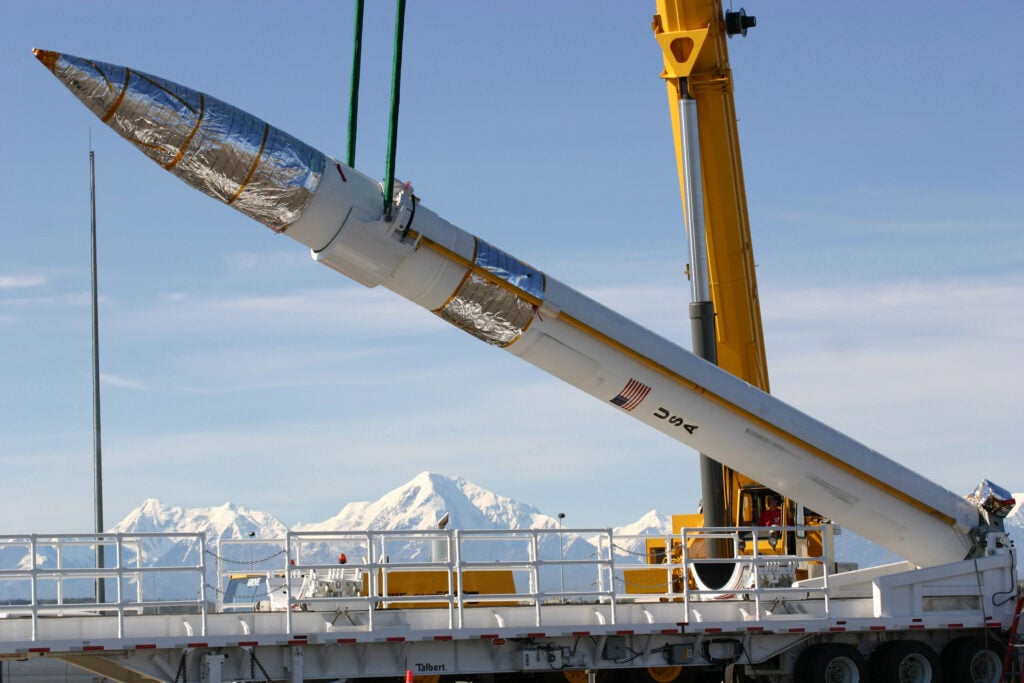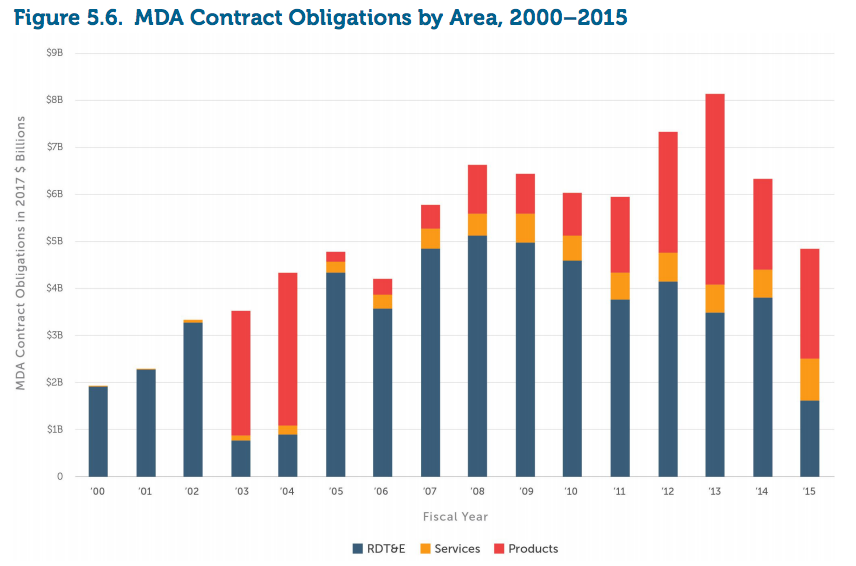Missile Defense R&D Getting Short Shrift: CSIS
Posted on

A Ground-Based Interceptor is lowered into its missile silo in Alaska.
UPDATE MDA Deputy says transfer talks with services “making progress”
WASHINGTON: Long-range R&D for missile defense is being squeezed by near-term needs, warns a new report from the Center for Strategic & International Studies. The problem? The duties of the Missile Defense Agency keep expanding even as its budget shrinks. CSIS’s solution? Reform MDA in either of two ways:
- return MDA to its R&D-only roots as “the DARPA of missile defense” by transferring procurement and operations & maintenance functions to the services; or
- expand MDA with not only more money but a wider mandate similar to that of Special Operations Command, which does both R&D and high-priority combat operations.
Keeping Congress from plussing up aid to Israel’s Iron Dome, Arrow, and David’s Sling programs at the expense of US defenses would also go a long way, CSIS says.
In some ways, MDA’s a victim of its own success, write CSIS missile defense director Tom Karako and his co-authors. Its predecessor agencies in the Reagan, Bush I, and Clinton eras could concentrate on long-term research & development because there wasn’t much ready for the short term: Most missile defense technology at the time was too immature to deploy. The great exception, the famous Patriot, was developed by MDA’s forebears but then transferred back to the Army.
But since 9/11, MDA has matured, fielded, and kept funding three major missile defense systems: homeland GMD, land-based THAAD, and ship-fired SM-3. None has been transferred to the services.
[UPDATE] MDA is negotiating potential transfers, but it’s slow going, the agency’s deputy director said at CSIS this morning. “Over the last year with the army, we’ve spent a lot of time i’l call it really wrestling with the transfer of THAAD and TPY-2 (the THAAD radar). We’re making progress,” said Maj. Gen. Ole Knudson. “We’ve had some discussions with the Navy and the Air Force [too]” — but they’re all cash-strapped.
For services to agree to take over a missile defense program from MDA, Knudson said, they’re going to insist on taking over the funding for it as well. “In order for transfer to happen, the money programmed for (procurement, operations & maintenance) is going to have to go with it, at least in the near term,” he said.
(“If you want to kill a missile defense program, transfer it to a service,” snarked a congressional staffer from the audience: The services have too little money and too many other priorities they rank higher than missile defense).
Even if you did get agreement to transfer a program, Knudson continued, “you would have to plan this out seven years in advance”: The all-important Future Years Defense Plan (FYDP) sets spending levels in detail five years into the future, and staffers start working on the FYDP two years before it’s issued. [UPDATE ENDS]
Bottom line: For the foreseeable future, procurement, operations & maintenance, and military construction for all three systems will come out of the MDA budget.

Not only have Missile Defense Agency budgets gone down, but a smaller slice of that smaller pie goes to R&D (in blue). (CSIS graphic)
And maybe that’s as it should be, CSIS hastens to say. Patriot lost both funding and leadership focus when it was given back to the Army, which has plenty of other priorities in its budget — from combat boots to attack helicopters — that are dearer to its institutional heart than missile defense. The Ground-based Midcourse Defense (GMD) that protects the homeland is a particularly poor fit for any service’s portfolio, Karako & co. argue. (The Union of Concerned Scientists, which has opposed missile defense since the “Star Wars” days, would also say GMD just plain doesn’t work, as argued in depth in UCS’s own latest study).
For their part, none of the services is eager to take on extra responsibility that probably won’t come with extra money. Then-Chief of Naval Operations Adm. Jonathan Greenert and Chief of Army Staff Gen. Ray Odierno even wrote the Secretary of Defense in 2014 that their services’ current missile defense responsibilities were unsustainable.
So while the CSIS study is officially neutral between its two proposed solutions, it seems to lean towards building up MDA to better handle its growing role, rather than stripping it back down to the R&D shop of old. Institutional models include the Joint Improvised-Threat Defeat Agency — successor of the old JIEDO — and even Special Operations Command (SOCOM). The new BMD might even drop the “B” and address threats beyond ballistic missiles: cruise missiles, bomber aircraft, hypersonic weapons.
Of course, this expanded role requires an expanded budget for MDA, CSIS admits, just as transferring programs out of MDA requires an expanded budget for the services who take them over. In this budget climate, that’s not too likely.
Subscribe to our newsletter
Promotions, new products and sales. Directly to your inbox.
